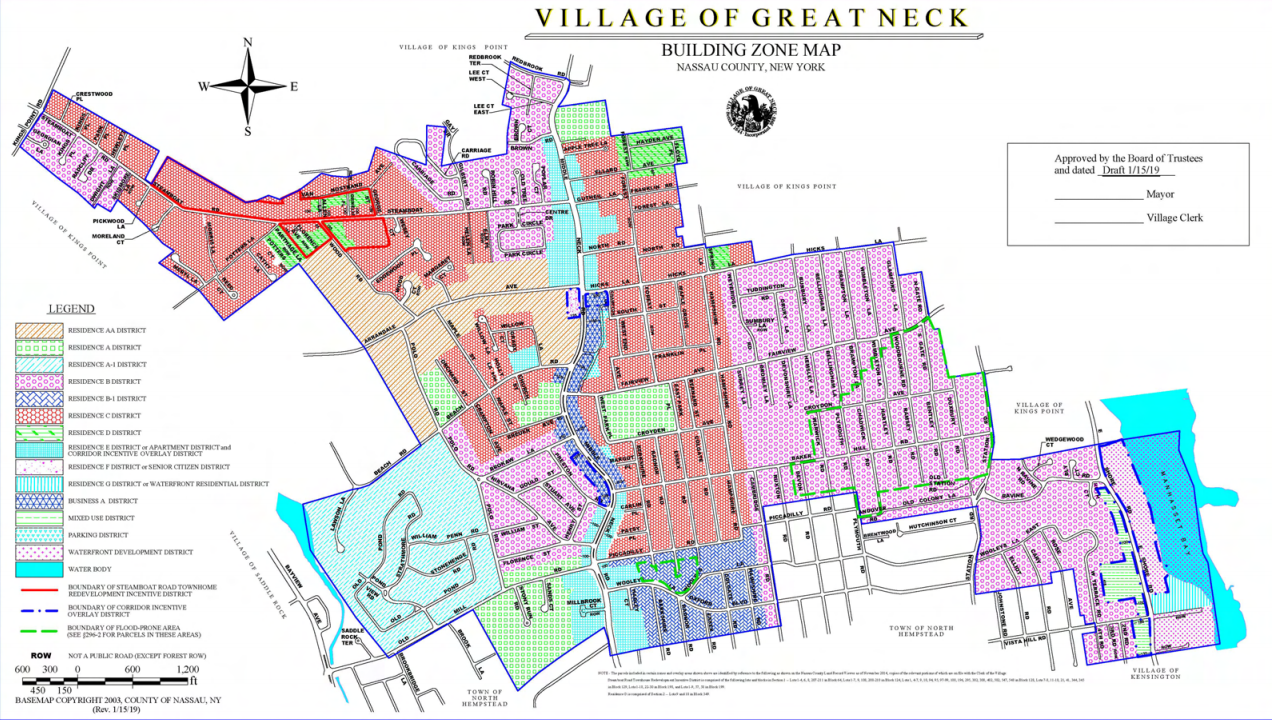The text of proposed zoning changes for portions of Middle Neck Road and East Shore Road in the Village of Great Neck was posted on the village’s website last week, and they put a premium on projects the board determines to be of “community benefit.”
The proposed changes would amend Chapter 575 of the village code and come in the wake of a study from VHB, the village’s consultant, which plans to present findings at the village’s next trustees meeting on Feb. 5 at 7:30 p.m. The changes seek to encourage “revitalization and growth of business activities deemed to be in public interest.”
The move would rename the Middle Neck Road Multifamily Incentive Overlay District as the Corridor Incentive Overlay District and expand its borders.
It would include the western portion of 720 Middle Neck Road, the properties of 700 Middle Neck Road and 697-705 Middle Neck Road, the west side of Middle Neck Road up to the northern boundary of 540 Middle Neck Road and include the mixed-use and waterfront development districts along East Shore Road.
According to the proposal, a building could be erected or used for “any commercial, Affordable Workforce Housing, or Assisted Living purpose” when identified as “a community/benefit/amenity in a particular circumstance.”
It also says that the Board of Trustees, “from time to time,” may “approve adjustments” to zoning restrictions in the chapter.
Factors to be considered include “improvement to the immediate neighborhood” or whole village, the scope and value of proposed amenities, and how much it would cost for the public to otherwise create the amenities.
The changes to the code would consider affordable workforce housing, assisted living facilities, ground floor commercial development, public amenities that improve access to the incentive district and “any other similar opportunity” the board finds to be beneficial.
The village could also accept one or more partial amenities and payments in lieu of community amenities, the proposal suggests.
But, according to the proposal, incentives cannot be granted to townhomes that exceed 30 feet in height or 22 feet at the eaves, six units, a length of 204 feet, or feature a façade exceeding 88 feet unless under certain conditions.
Generally speaking, the maximum height for a multifamily dwelling could not exceed four stories, or 42 feet, according to the proposal. If the building is “identified as a community benefit” by the Board of Trustees, the maximum height would be five stories or 52 feet.
The maximum allowed density for a multifamily dwelling would be capped at 48 units per acre, the proposal says.
The proposal also offers a relaxation of parking requirements for properties adjacent to Middle Neck Road on a “case-by-case basis” and would be “favored by the Board” when infrastructure improvements like sidewalks, benches, park improvements, traffic calming measures, investment in shuttle busses, and other community amenities are offered.
These amenities cannot have a base height above 30 feet, the proposal says.
The proposal would also require that all applications seeking incentive zoning bonuses would require a public hearing and five days public notice.
There will be a public hearing on Feb. 19 to consider the zoning changes, as well as a six-month moratorium on small subdivisions.



